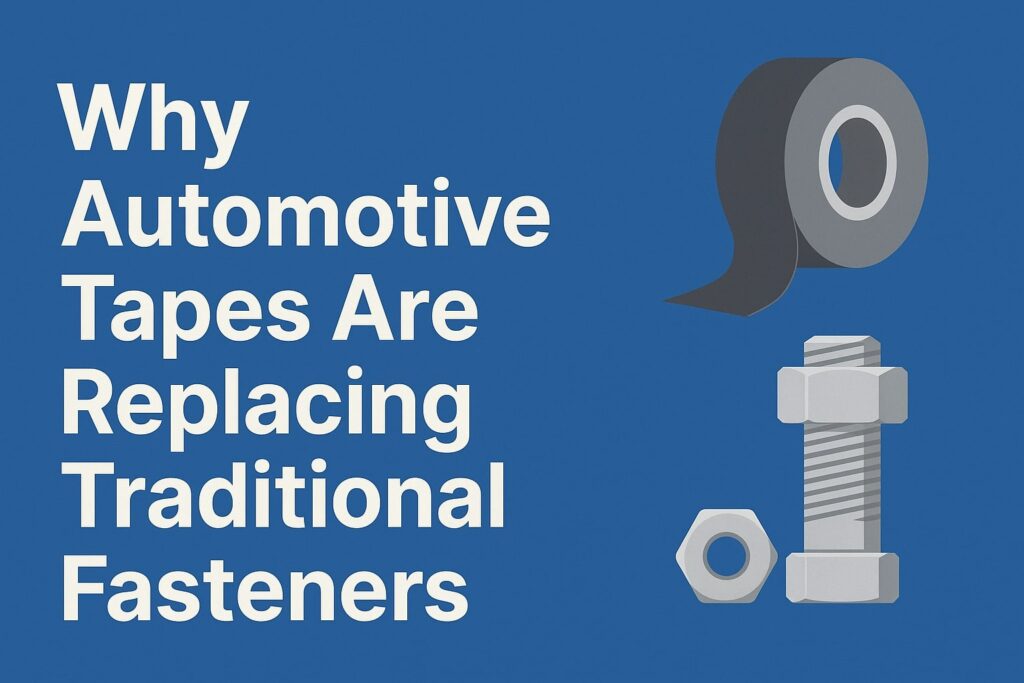In the ever-evolving automotive industry, efficiency, performance, and innovation drive change. One of the most notable shifts in recent years is the growing use of automotive tapes as a replacement for traditional mechanical fasteners such as screws, bolts, and rivets. These tapes, once reserved for simple applications, now play a critical role in vehicle assembly and design—transforming how modern cars are built.
What Are Automotive Tapes?
Automotive tapes are specially engineered adhesive tapes designed to meet the unique demands of the automotive sector. They offer high-strength bonding, resistance to extreme temperatures, and durability against vibration, moisture, and UV exposure. Unlike conventional fasteners, automotive tapes provide seamless, lightweight, and versatile bonding solutions for both interior and exterior vehicle components.
Why the Shift From Fasteners to Automotive Tapes?
1. Weight Reduction
Reducing vehicle weight is a top priority for automakers to improve fuel efficiency and reduce emissions. Automotive tapes are significantly lighter than nuts, bolts, or welding materials, contributing to overall weight reduction without compromising structural integrity.
2. Enhanced Aesthetics and Aerodynamics
Fasteners often create visible seams and joints that disrupt a vehicle’s clean design. Tapes eliminate the need for mechanical fixtures, offering smooth, uninterrupted surfaces that improve both appearance and aerodynamics.
3. Faster Assembly Time
Unlike traditional methods that require drilling, aligning, and securing hardware, automotive tapes can be applied quickly with minimal equipment. This reduces production time and increases efficiency on assembly lines.
4. Improved Noise, Vibration, and Harshness (NVH) Control
Automotive tapes dampen vibrations and reduce rattling, resulting in a quieter, more comfortable ride. This makes them ideal for securing interior trims, dashboards, and electronic components.
5. Corrosion Resistance
Traditional fasteners can lead to rust formation around drilled areas. Tapes offer a non-invasive solution that eliminates this risk, especially important in areas exposed to moisture or salt.
The Connection to Packaging Materials
The innovation in packaging materials has paved the way for advanced adhesive technologies. Just as packaging tapes evolved to meet the needs of logistics, the development of robust adhesives and substrates has enabled the rise of automotive-grade tapes. These tapes share qualities like high bond strength, resistance to environmental stress, and ease of application—making them suitable for high-performance automotive environments.
Applications of Automotive Tapes
- Mounting emblems, trims, and moldings
- Securing wire harnesses and sensors
- Bonding interior panels and insulation
- Attaching weather seals and gaskets
- Fixing exterior decorative elements
Future Outlook
As the automotive industry shifts towards electric vehicles (EVs) and lightweight designs, automotive tapes are set to become even more integral. They enable creative design possibilities and support the move toward more sustainable, efficient manufacturing.
Conclusion
The adoption of automotive tapes in place of traditional fasteners represents a significant advancement in automotive design and manufacturing. With benefits ranging from weight reduction to enhanced durability and speed, it’s no surprise that manufacturers are increasingly turning to adhesive solutions. As innovations in packaging materials continue to evolve, we can expect even greater performance and sustainability from automotive tape technologies in the near future.
